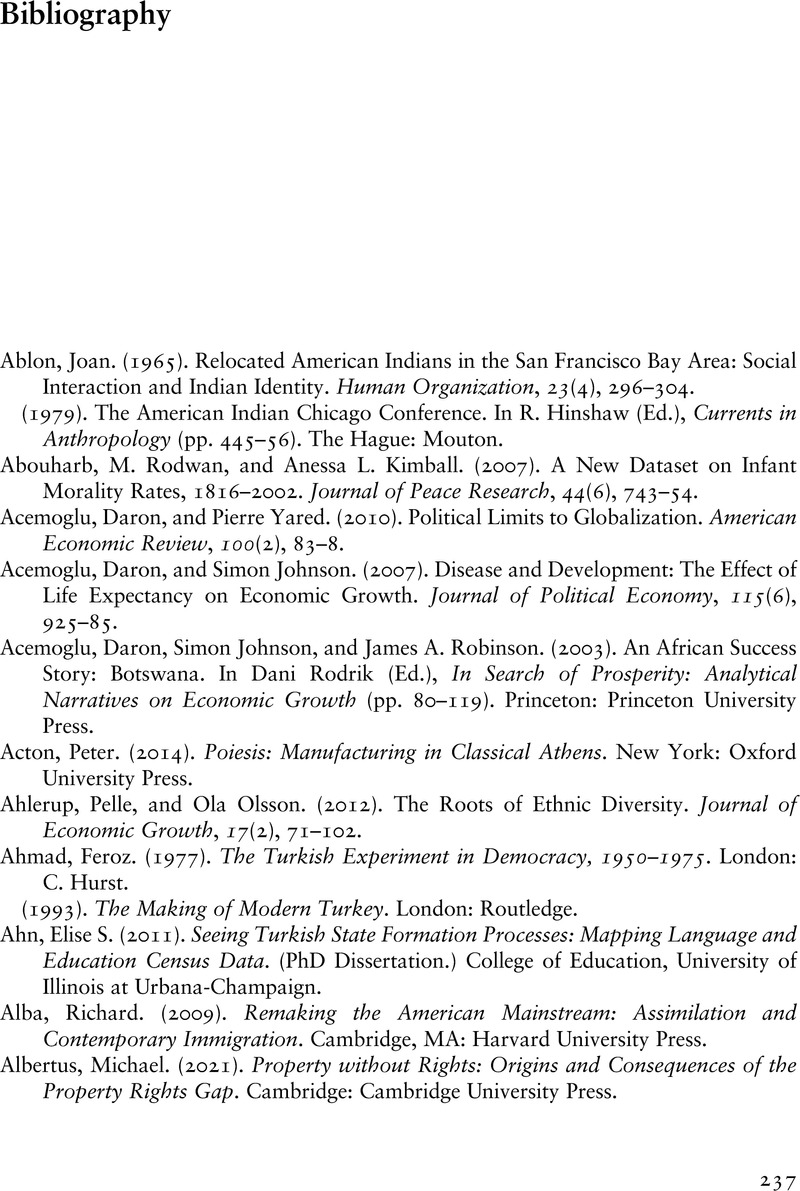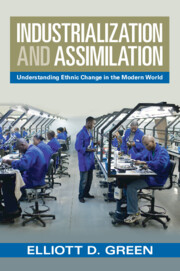Book contents
- Industrialization and Assimilation
- Industrialization and Assimilation
- Copyright page
- Dedication
- Epigraph
- Contents
- Figures
- Maps
- Tables
- Acknowledgements
- 1 Introduction
- 2 Understanding Ethnicity and Industrialization
- 3 Industrialization and Assimilation in Historical Perspective
- 4 Cross-National Evidence
- 5 Industrialization and Assimilation in Mid-twentieth-Century Turkey
- 6 Cases of Non-industrialization in Africa
- 7 ‘Cattle without Legs’
- 8 Ethnic Change among Native Americans in the United States
- 9 Ethnic Change among the Māori in New Zealand
- 10 Conclusion
- Appendix Country-Level Data Used in Chapter 4
- Bibliography
- Index
- References
Bibliography
Published online by Cambridge University Press: 18 November 2022
- Industrialization and Assimilation
- Industrialization and Assimilation
- Copyright page
- Dedication
- Epigraph
- Contents
- Figures
- Maps
- Tables
- Acknowledgements
- 1 Introduction
- 2 Understanding Ethnicity and Industrialization
- 3 Industrialization and Assimilation in Historical Perspective
- 4 Cross-National Evidence
- 5 Industrialization and Assimilation in Mid-twentieth-Century Turkey
- 6 Cases of Non-industrialization in Africa
- 7 ‘Cattle without Legs’
- 8 Ethnic Change among Native Americans in the United States
- 9 Ethnic Change among the Māori in New Zealand
- 10 Conclusion
- Appendix Country-Level Data Used in Chapter 4
- Bibliography
- Index
- References
Summary

- Type
- Chapter
- Information
- Industrialization and AssimilationUnderstanding Ethnic Change in the Modern World, pp. 237 - 268Publisher: Cambridge University PressPrint publication year: 2022



